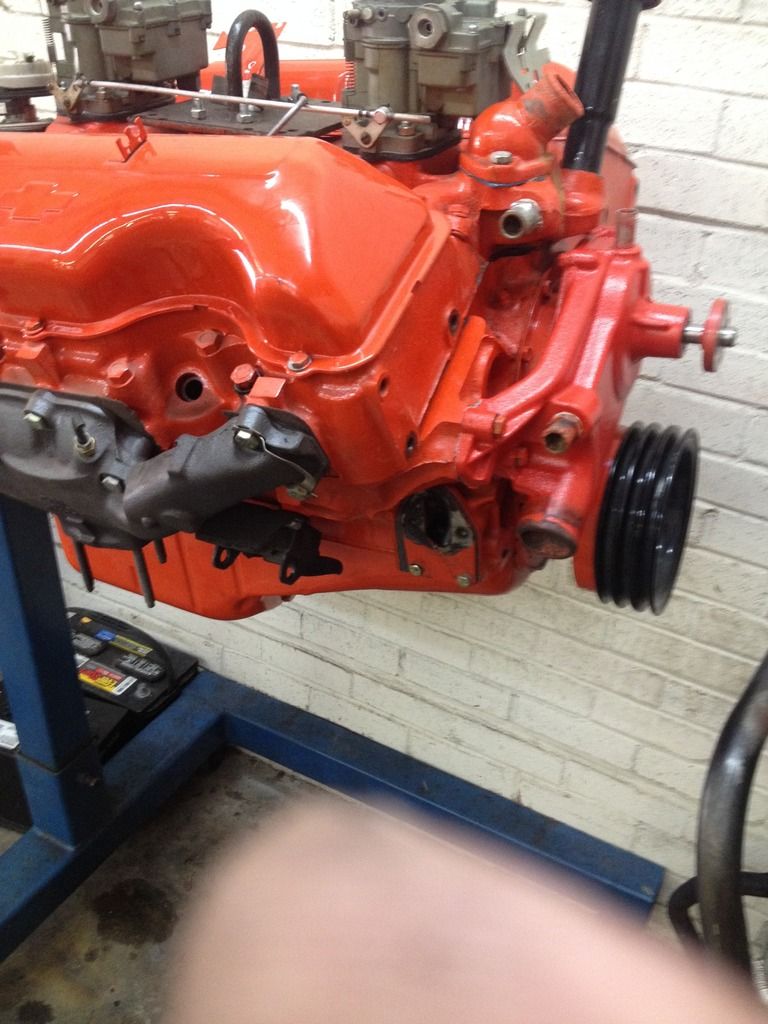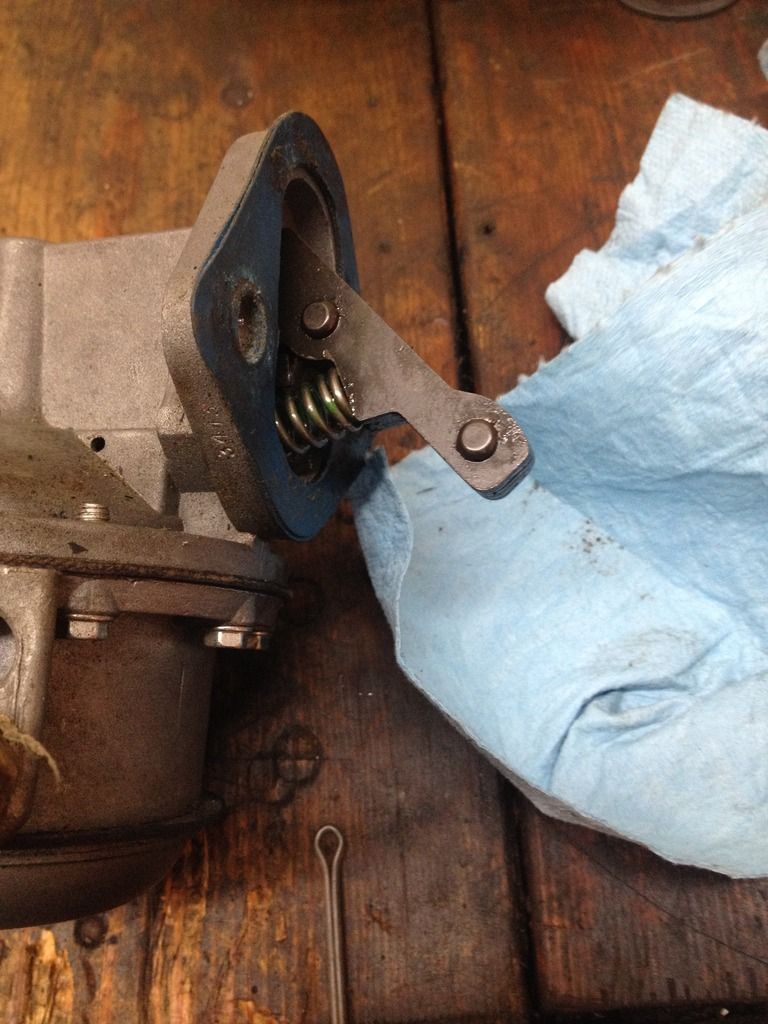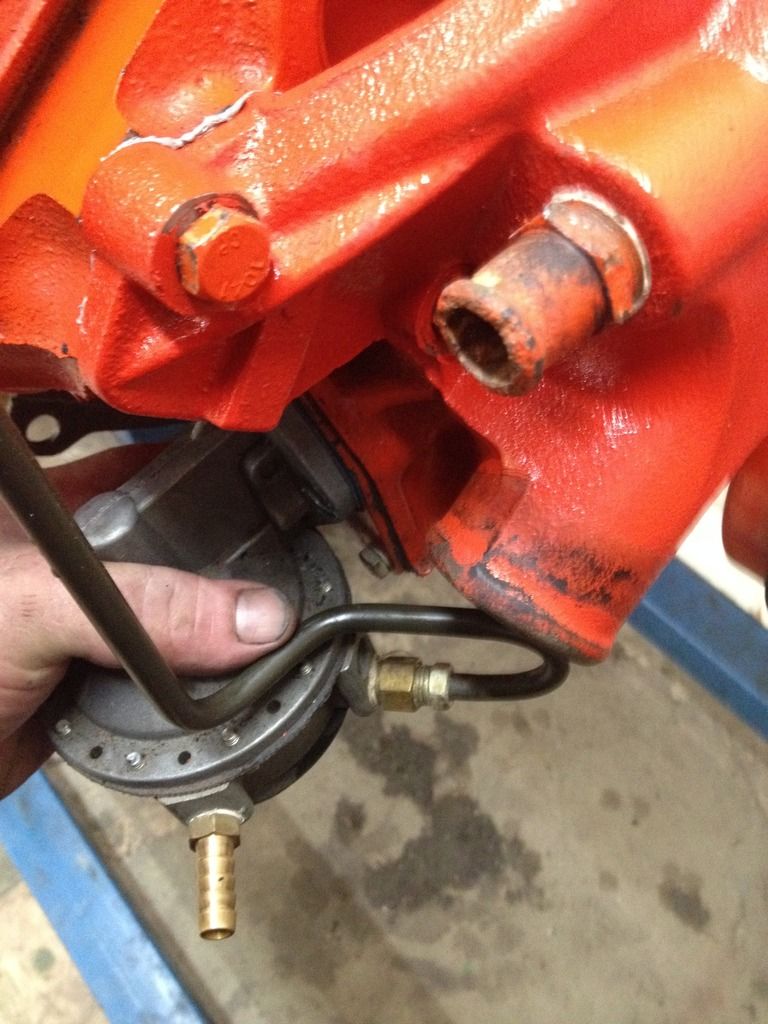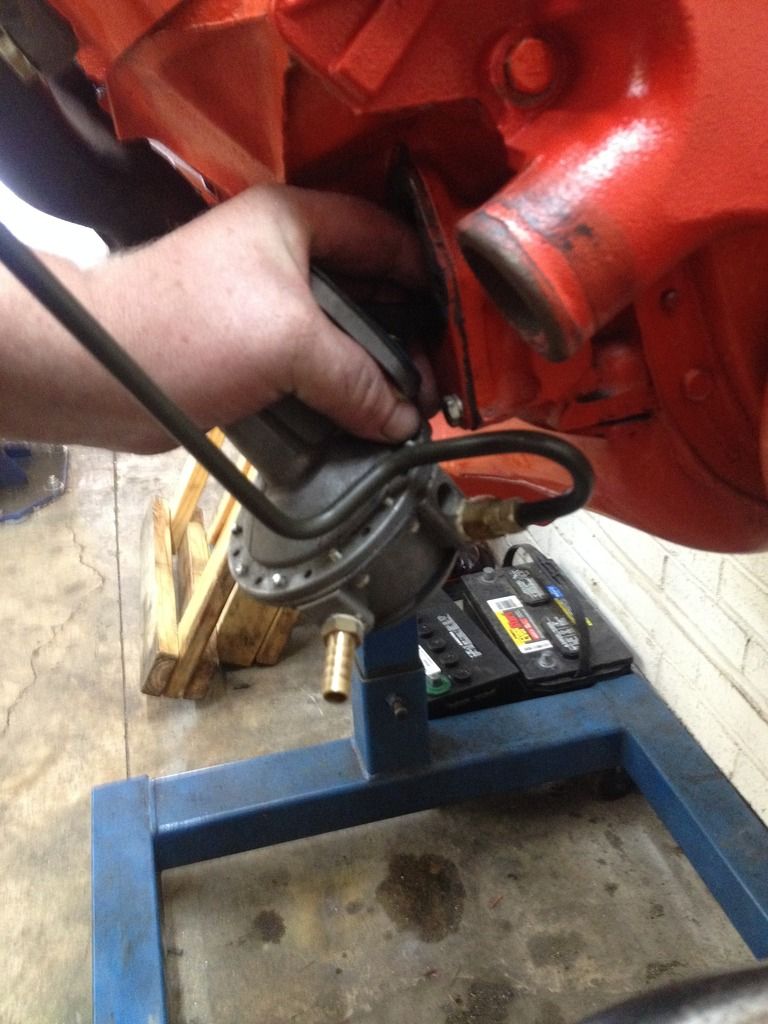Originally Posted By: clinebarger
The original 265 didn't have the bolt hole tapped for this "GM" procedure or any small journal small block I have ever seen
Hey do it which ever way you want, these pumps use a short arm making it difficult to "kick the push rod up with the lever", The GM procedure called for using heavy grease on the push rod to hold it but that didn't work very well, so they came out with another trick in a service bullitin.
The 265 did have a bolt that could be removed and replaced temporally with a longer bolt.
265 Chevy pump discussion

Its difficult to kick it up out of the way with that little stub.

The original 265 didn't have the bolt hole tapped for this "GM" procedure or any small journal small block I have ever seen
Hey do it which ever way you want, these pumps use a short arm making it difficult to "kick the push rod up with the lever", The GM procedure called for using heavy grease on the push rod to hold it but that didn't work very well, so they came out with another trick in a service bullitin.
The 265 did have a bolt that could be removed and replaced temporally with a longer bolt.
265 Chevy pump discussion

Its difficult to kick it up out of the way with that little stub.

Last edited:





